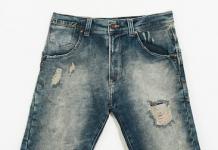Do-it-yourself photo of an electric scooter from a ready-made set
Electric scooter- a toy that is interesting not only for children, but also for adults. It gives freedom of movement on roads with any surface, delivering a lot of driving pleasure. Of course, it is not worth considering this device as the main means of transportation, but someone will hardly refuse to ride it, having received a lot of pleasure. There are enough models of electric scooters for children and adults in the retail network, so everyone can choose it according to their preference. If your hands are in place, you may want a do-it-yourself electric scooter. This is quite a feasible job, the result of which will give you twice as much pleasure as buying a ready-made vehicle.
It is unlikely that you want to make an electric scooter for an adult. But, for a child, such a toy will be the height of dreams.
A motor for a scooter today is not a problem to purchase, but if a screwdriver, then its motor will be enough. Then you need to decide on the preferred version of the torque: using two gears, a chain or a special attachment (friction transmission). The option of direct rotation, that is, using a flexible cable, from a car speedometer, for example, is also suitable. The expensive motor-wheel option often disappears right away.
Along the way, you need to decide which wheel you need to rotate? For a scooter, it is not so critical which wheel - front or rear - will rotate, but the second option seems to be more correct, since a brake can be installed on the rear wheel.
For the design, 14V is quite enough, which means that you can choose the 4S1P configuration: by disassembling the grinder and the cordless drill. Having removed everything from the drill, we get a motor with a gearbox, and by removing the body from the grinder, you will have an axle with a rotor and a gearbox with bevel gears. The axis of the scooter wheel will be the rotor axis, and the part where the disc is mounted will be connected to the motor. Having made these manipulations, we can assume that the floor of the scooter is ready. A serious problem is the battery. It is unlikely that heavy lead is suitable here, so you need to go to the radio parts store for a lithium battery ( a battery from an electric LiPoly helicopter is perfect). You can fix it on the handlebars, where baskets for small things are often installed. There is no need to invent a speed regulator, since it becomes a standard speed regulator button.
With a little more conjuring, you can get what for the sake of which most of the instrument in the house was disassembled.
Review
Having a technical education, I took the risk of "creating" an electric scooter for my little son. I will not say that everything went like clockwork for me, because I had to tinker. But, in the end, the toy is ready and already tested in action, which gives me a well-deserved sense of pride.
Nikolay Cherednichenko, resident of Ivanovo
Instead of a preface
In our life, like lightning, foldable mini-scooters drove in and rolled in. Outwardly, they differ little from each other. The main difference is in the names. For example, a foreigner "Scooter", Russian "Zipper" and "Moonshine" and so on.
The modern scooter is a product of interspecific hybridization of the classic running machine of K.F.Drez - a scooter (the constructive diagram is taken from it), a skate (support platform) and roller skates (polyurethane rollers).
The development of the scooter continues, so it is quite possible that very unusual designs will appear. Moreover, when riding a scooter, when pushing, muscle energy is realized most efficiently, muscles are used more than when riding a bicycle.
If a folding purchase mini-scooter is a sport and entertainment item, then the Dachnik scooter, which I want to talk about here, is a household item.
Idea development
Pushing with my hands a hand trolley on wheels - the main means of small-scale transport mechanization of the era of transition from developed socialism to a market economy, I once realized that there was clearly a lack of a support platform with a wheel. After putting one foot on such a platform and pushing off the road with the other, one could roll on a cart like on a scooter.
However, an attempt to adapt a platform with rollers from a skateboard to a cargo trolley was not entirely successful due to the poor quality of the sliding bearings of the wheels of the cargo trolley, moreover, the maneuverability of the crew left much to be desired. And the family did not allow me to completely ruin my son's skate.
In this regard, it was necessary to develop a cargo-passenger scooter. I do not pretend to be a novelty of the idea. At one time, the cargo-passenger scooter was built by engineer S.S.Lundovsky, but in its design the trunk platform, taken from a road bike, was raised too high, and the structure itself, assembled on the basis of a children's bicycle, did not have sufficient strength.
The main material for the manufacture of the proposed below homemade scooter(Fig. 1) steel tube rack and inflatable wheels from a children's bicycle measuring 12.5 "x2.25" (205x56 mm).
The main elements of a homemade scooter
Front fork
For the front fork-steering column, I selected 20mm steel pipes, although 22mm pipes would be better suited. At the ends of the flattened fork tubes, slots are made for installing and fixing the front wheel axle (Fig. 2).
The part (bridge) that unites the feathers into a fork is made of a channel with a shelf width of 75 mm and a length of 120 mm, bent from steel sheet 3 mm thick. Two holes with a diameter of 20 mm are drilled in the channel at a distance of 90 mm from each other to install the fork-column pipes in them (Fig. 3). These pipes are welded to the bridge with circular seams. Between the holes for the pipes of the fork-column in the bridge shelves, a hole with a diameter of 22 mm is drilled for the pivot axle - a piece of 1/2 "pipe. To increase the" torsional rigidity "of the front fork, a jumper and a ring with a diameter of 300 mm are welded to the tubes of the handlebar, which is bent out of steel thin-walled pipe with a diameter of 10 mm.
The steering column bearing assembly is made of a 3/4 "threaded T-piece (see Fig. 3). As already mentioned, the pivot shaft is a 1/2" piece of pipe with threads at the ends. Axial clearances in the bearing assembly are eliminated with brass washers, which, by the way, reduce friction in the hinge.
The scooter frame consists of three parts (fig. 4). Before assembling it, it is advisable to draw a general view of the scooter in full size on a sheet of plywood. If a scooter is made for oneself, then its dimensions are naturally adjusted to fit their dimensions. The experience of S. S. Lundovsky shows that the clearance (ground clearance) of 30 mm is quite sufficient for a scooter.
The S-shaped part of the frame is bent out of the 3/4 "pipe using a pipe bender, which is always available in the workshop at the ZhEK. At one end of the pipe, a 3/4" thread is cut to connect with a tee. To prevent self-unscrewing, the threaded connection of the tee with the frame tube is countered by installing a cotter pin into the hole drilled in it (connection) (see Fig. 3).
The rear of the frame is a road bike front fork. The plug is inserted into the pipe of the front S-shaped part, and the joint is welded with a circular seam. A 15x15 mm corner jumper welded between the stanchions reinforces the fork. Subsequently, a support platform (step) and a rear mudguard fender are attached to it.
The footboard is cut out of plywood 10 ... 12 mm thick and fixed with two M6 screws (with a conical head) to the jumper and one screw in the fork (see Fig. 1). Corrugated rubber, for example, from an old rug, is glued to the footboard or nailed with small nails.
When transporting a scooter by public transport, the steering column axle is removed and the frame is disconnected from the front fork. Note that the front wheel fork can be used autonomously, like a conventional monocycle trolley.
Additional equipment of the scooter
For better stability of the scooter, its trunk should provide a low position of the center of gravity of the load. The heaviest parts of the load are placed on the sides of the luggage compartment "over-the-top".
The scooter equipment necessarily includes good splash guards and reflective reflectors - reflectors. The front is white, the sides (on wheels) are yellow, and the back is red. The more reflectors are installed, the better. Plastic handles from ski poles or from the handlebars of a bicycle are put on the ends of the handlebar tubes. It is useful to equip the scooter with a sound signal of the "Matchish" type and a brake with a drive to the rear wheel.
By providing the possibility of installing a seat on the trunk for a small passenger, for example, from a stroller, where the seat is equipped with footrests, we turn the scooter into a rickshaw. If the seat does not have side handrails in its front, it is necessary, as on a motorcycle, to install a ring or a handle for which the passenger will hold his hands while driving. The basis of the backrest for the passenger will be a ring welded to the tubes of the steering wheel.
An easily removable fairing-awning made of transparent film or Bologna fabric with a transparent window, mounted on a flexible frame made of thin-walled pipes, will protect the passenger from adverse climatic factors, providing the traveler with more comfortable conditions. When driving with a passenger, the load is placed behind the rudder tubes, strapping it to the ring, like a pack (Fig. 5).
The Taming of the Shrew
Learning to ride a scooter begins on a flat asphalt ground. The main attention is paid to practicing a long and strong, but not sharp jerk with the foot, and they also try to master the coasting movement, by inertia. Please note that the handlebar must remain completely motionless when rolling, as otherwise the resistance to movement increases and the speed of the scooter decreases.
Past and thoughts
The design of a homemade scooter presented here is rather a working mock-up model, the shortcomings of which are obvious. First of all, the diameter of the rear wheel is too large, which increases the size of the roller. Excessive cross-country ability, generally speaking, is useless, since on difficult sections of the road it is better to dismount and overcome them, rolling the carriage with luggage with your hands.
Perhaps the best option would be to install a rear wheel with a reduced diameter, for example, from the Sibiryak roller ski. As a front wheel, it is probably advisable to use a wheel with a tubeless tire from a Druzhok bicycle, as it is not afraid of punctures.
It should be noted that scooters with an internal combustion engine with a working volume of 28 "cubes" are now extremely popular in the West. If you are lucky enough to get a small-sized motor from a "Mac Cullog" -type chainsaw, then you can easily make such a projectile by equipping the roller with an engine.
Scooters have been around since the 1920s. Initially, they were just toys for children, but now they have become a very common form of transport all over the world - from the simplest version, propelled by the foot, to numerous types of scooters with motors. Just like the guys in the 1920s, you can build a simple wooden scooter. Here's how to do it.
To make a scooter you need
- Workbench or saws
- Fixed square for joinery
- Electric drill with 0.6 cm and 13 mm diameter drills.
- Two adjustable wrenches
- Tape measure
- crosshead screwdriver
- Pencil
- Sharp saw
- Hammer
- Processed for Bars, Handle and Handle Rack 3.8cm x 5.1cm
- Treated pine for connecting neck 5.1 cm x 7.6 cm
- for footboard with a thickness of 1.9 cm
- Four bolts with a ring: two bolts 0.6 cm thick, 5.1 cm long, with a ring hole diameter of 1.6 cm and two bolts 0.6 cm thick, 7.6 cm long, with a ring hole diameter of 1.6 cm [J]
- Four square head bolts, 0.6 cm thick, 4.4 cm long, with washers and nuts each
- Two hex head bolts 0.6 cm thick x 7 cm long, with nuts for each
- Six square head bolts, 0.6 cm thick, 4.4 cm long, with washers and nuts each
- Two carriage bolts, 1.3 cm thick, 12.7 cm long, with washers and nuts for each
- One hex head bolt, 1.3 cm thick, 15.2 cm long, with two nuts (screw in reverse) and four washers. This is a pain for the front axle of the wheels
- One hex head bolt, 1.3 cm thick, 15.2 cm long, with two nuts (screw in reverse) and four washers. This is the bolt for the rear axle of the wheels
- One square head bolt, 1.3cm thick, 20.3 long, with two nuts (reverse screw). This bolt fits into the holes of the ring bolts and acts as a pivot bar
We will build the scooter like this
- Measure, sawed off, drilled holes and laid out: a) Cut off pieces of wood in accordance with the specified dimensions. b) Carefully measure and mark the centers of the holes to be drilled. c) Then the holes were drilled. Please note that they are of two different diameters. The holes for the axle bolts and the bolts that attach [A] to the connecting pin [C] are 1.3 cm in diameter. All other holes are 0.6 cm in diameter. D) Lay all parts on the floor.
- Assemble the scooter handle: Bolt the two corner brackets [I] to the top of the steering column [E]. Then bolt the handle [F] in place.
- Assemble the front wheels of the scooter: Assemble the front wheels using a 1.3 cm bolt as the wheel axle. Place a washer on each side of each wheel. After checking that the assembled axle is not overtightened to allow the wheels to spin freely, tighten the two nuts opposite each other to form a “locknut”. This will help to ensure that the assembled axle does not vibrate during continuous movement. Place two bolts with rings in the corresponding holes in the steering column [E].
- Assemble the platform frame: Attach two longitudinal bars [A] to the connecting neck [C]. Place the remaining two ring bolts into the corresponding holes in the journal [C].
- Attach Deck: Attach Deck [D] to two Bars [A] with six carriage bolts.
- Attach the steering: Align the collars of the bolts in the collar [C] with the collars of the bolts of the steering column [E]. Insert a carriage bolt through the holes in the ring bolts to act as a kingpin - the pivot pin of the swivel joint. Check that the swivel joint can turn freely and then tighten the two nuts on the carriage bolt to form a “locknut”. This will ensure that the rod does not fall out and does not vibrate with constant movement.
- Install the collar: Attach the angle bracket to the collar [C] and deck [D] with screws. This is done to strengthen the structure.
- Assemble the rear wheels of the scooter: Assemble the rear wheels in the same way as the front wheels in step 3. Check that there is a washer on each side of the wheel and that the wheels rotate freely before tightening the “lock nut” on the end of the bolt.
- Add brake: Screw the T-loop to the back of the deck [D].


Safety when using a homemade scooter
Smooth paved surfaces work best; avoid uneven, wet, rocky, bumpy surfaces. Stay out of traffic!
The front part is made of mountain, there is also a hand brake. As for the rear, it uses a smaller diameter wheel from a children's bike. The author got the bicycles practically free of charge. A thick-walled metal tube is used to create a strong frame that will not bend under human weight. Assembling the scooter is pretty quick and easy. It is enough to have some initial skills in working with the tool.
Materials and tools for making a scooter:
- the front part of a mountain bike for adults;
- rear fork with a wheel from a child's bike;
- steel plates;
- screws;
- a piece of sturdy metal pipe to create a frame;
- spanners;
- welding machine;
- grinder;
- drill;
- dye.
Scooter making process:
Step one. We disassemble bicycles
First you need to get the necessary elements to create a scooter. From a mountain bike, you need a front fork with a wheel, you also need to leave a handbrake. You need to take a grinder and cut off the frame from the front fork, as you can see in the photo. In addition, there is also another option, you can not cut off the bottom of the frame, but simply extend it with a piece of pipe, if it is rigid enough to create a scooter.
As for the rear fork of a child's bike, it all depends on the design. If this is also a mountain bike, then the fork can be simply unscrewed. If normal, you will also have to work with a grinder.
Step two. We create the frame and weld the structure
To create a frame, you need to take a metal pipe and bend it so that it is approximately the same in shape as in the photo. The pipe must be strong so that it does not buckle under the weight of the person. One end of the pipe is welded to the front fork, and to the other end, the author welds a metal plate. Further, the rear fork is welded to this plate, so the design is more reliable, since the rear wheel has the greatest load.
Step three. Attach the board
To make it comfortable to stand on the scooter while riding, you need to screw a board to its frame. For these purposes, you first need to weld 2-3 metal plates to the frame and drill holes in them. Well, then the board is simply screwed to the plates using screws with nuts or self-tapping screws. In the board, you will need to make a cut, as in the photo, so that the frame goes into it.
Step four. Scooter painting
You can paint the scooter to your taste. The author used a matte black spray paint for the frame. For the board and rear wheel, a bright pink fluorescent paint was used. It was this color that most of all went to the soul of the author's daughter.
That's all, now the scooter is ready for testing.
How much distance can a person travel by pushing off the ground once? If this is one step, then on average it is less than meters. If you run up and push off harder, you can make a jump of four or five meters. Therefore, imagine our surprise when a modest, already middle-aged man appeared in the editorial office and said that he could move 50 m from one push of his leg, and even with a load of 30 kg. The visitor was holding a strange cart. We, of course, doubted.
And having doubted, they demanded proof.
Well, please, the owner of the strange cart told us. - Let's go outside. Here, on the asphalt, we made sure that we are not being deceived.
Upon closer inspection, the "cart" turned out to be a converted children's scooter. Our guest, engineer Sergei Stanislavovich Lundovsky, managed to turn it into an unusual vehicle for adults.
How did you manage to "mature" the scooter how? What is the essence of its rework? First of all, in the maximum allowable lowering of the platform on which the "driver" stands. The ground clearance of the converted scooter when loaded is only 30 mm. But this, as practice has shown, is quite enough for driving not only on smooth asphalt, but also along country paths. The scooter just slides forward when it touches the bottom of the bumps in the road. And if a bigger obstacle is encountered, the driver can help his car by jerking the steering wheel up and thus raising the front wheel.
Lowering the platform lowered the center of gravity of the machine, which favorably affected its stability and made it easy to reach the ground with a "push" leg, without bending the supporting leg at all at the knee. And thanks to this, the driver is much less tired than when using a scooter with a standard (high) platform.
The car is made on the basis of the children's sports roller "Orlik" (cost 14 rubles). As shown in the illustration, the fork legs leading to the rear wheel and the front of the roller have been cut off. A new platform for the size of the boot was made from a steel corner 20X20X5 mm; in the drawing, its length is 320 mm, which is the most advantageous. The front part of the factory sportsroller is connected to the platform with a clamp welded to the pipe and four M8 bolts. A plate with a thickness of about 20 mm is placed under the legs of the clamp, with the help of which the tilt of the platform, which is most convenient for the driver, can be found.
The length of the steering tube should be increased in such a way that it is comfortable for the driver to control the machine without bending.
The rear wheel fork is made from the same angle as the platform itself.
The rack, which is best positioned above the front wheel, is a stamped bicycle rack. It is attached to the head of the steering column and to the front axle. It is not possible to put the trunk in the back, as the load makes it difficult for the jogging leg to move.
You should start learning to ride a roller skate on a flat, asphalt area that does not have slopes. The main attention is paid to practicing a long and strong, but not sharp jerk with the leg, as well as mastering the movement of inertia. In this case, the steering wheel must be completely motionless, otherwise (due to the increased resistance) the speed drops rapidly.
In training, it is quickly determined which leg is the most efficient as a support and which as a jerk.
S. LUNDOVSKY, engineer
Have you noticed a mistake? Highlight it and press Ctrl + Enter to let us know.



































